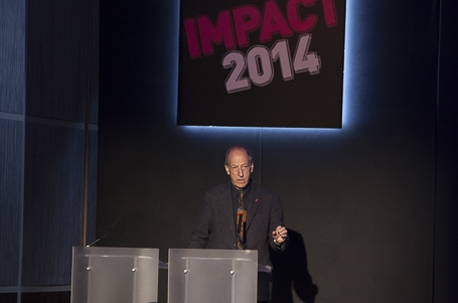NEWS18 March 2014
All MRS websites use cookies to help us improve our services. Any data collected is anonymised. If you continue using this site without accepting cookies you may experience some performance issues. Read about our cookies here.
NEWS18 March 2014
Professor David Canter describes how his previous work in market research helped him assist the police in solving serious crimes – bringing offender profiling out of the realms of myth.

Few people can claim to have helped bring about the birth of the Hobnob – David Canter is one of them. As he described at his session at the MRS Conference, his work with United Biscuits – mapping the representation of customers’ conceptualisation of biscuits – in the early eighties, led to the gap in the market between ‘good but bad’ biscuits (biscuits that taste good but are perceived to be bad for you) and ‘bad but good’ (biscuits that taste bad but are perceived to be good for you) being filled by what is now one of the nation’s favourite biscuits. Little did he know this thinking would one day help him to solve a series of serious crimes.
Working as an academic psychologist, Canter dabbled in market research to “pay the bills”. He had previously done research studying people’s behaviour in emergencies and how they make sense of cities.
This combined experience led to Canter being approached by the police to help solve a number of serious crimes – rapes and murders – committed in London during the early eighties.
“I was asked a question that changed my life: ‘Can you help us catch this man before he kills again?’” explained Canter. He describes how three police forces had joined forces to attempt to solve a number of rapes and murders that had been broadly linked together from victims’ descriptions of the perpetrator.
Police had previously been basing their investigation on victims’ reports, lending more weight to those victims who seemed more confident in their descriptions.
But Canter knew that confidence was not necessarily linked to accuracy, “and I knew that behavioural material is more accurate than written descriptions”, so set about approaching the problem from a systematic, scientific perspective. He used the same principles he had applied to both his biscuit mapping (clustering together crimes based on similarities between the victims’ descriptions and the behaviour of the perpetrator) and his work on understanding cities (using geographical data on the crime locations to hypothesise where the perpetrator lived) to produce an extremely detailed profile of the criminal, who was eventually brought to justice. Canter says that this result “opened the door to do proper research and build up proper models” around behavioural and geographic profiling.

Canter subsequently developed his Dragnet software to help police forces to apply his thinking in a more widespread way. He also advocates police forces develop systems and frameworks to ensure psychology is brought in to police training and integrated throughout criminal investigations.
In doing so, he hopes that this will minimise police forces “flapping about trying to find ideas” that they hope will lead to solving crimes, such as innacurate profiling based on minimal theory and – in some cases in the US – using psychics.
Related Articles
0 Comments